(Italian) Jurassic News numero #44
Sorry, this entry is only available in Italian.
Sorry, this entry is only available in Italian.
![C64 Game: Last Mission (Tronic) +3D 101% / My Grand Piano [ntsc/pal] ...](https://www.nightfallcrew.com/wp-content/uploads/2012/10/c64_31_10_2k12-300x225.png?76c919) Some new games (Cracked / Trained or Unrealeased) for Commodore 64 have been released from your favorites groups: Dinasours, Antarctica and Laxity.
Some new games (Cracked / Trained or Unrealeased) for Commodore 64 have been released from your favorites groups: Dinasours, Antarctica and Laxity.
Download:
source: csdb.dk
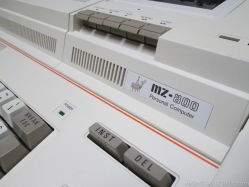
Autopsy:
from Old-Computers.com:
The sharp MZ 800 was the successor of the MZ 780. It was partially compatible with the MZ 700 series and the old MZ 80K series as well.
It was sold under three reference numbers:
The Tape drive could be substituted for a Quick-disk drive unit. The Quick-Disc was a small 2.8-inch disk with sequential access.
Like the MZ 700, there was no language in ROM, it had to be loaded from tape, quick disk or floppy disk. The ROM only contained boot code, OS calls and special code to allow the user to use the 64 KB RAM as a virtual disk.
A single or double 5.25″ disk drive could be connected to the MZ 800. It then worked under a special version of CP/M called P-CP/M. Some great products like Wordstar, dBase II and Multiplan were adapted to it. Under CP/M, it was possible to read multiple disk formats from the 360 KB (Sharp format) to the 720 KB (CP/M IBM PC format).
The MZ 800 was sold in Japan under the name SHARP MZ 1500. The MZ 1500 had the same characteristics except its black case, a built-in Quick-Disc drive and a slighty different graphic video management.
source: old-computers.com
This is the official demo party results from X-2012 (Top 3 Entries only). See also the CSDB X2012 section for more informations and downloads.
C64 Demo Competition:
C64 Graphics Competition:
C64 Music Competition:
Download:
source: noname.c64.org
 The C64-Archiv is an easy to use file manager for C64-files.
The C64-Archiv is an easy to use file manager for C64-files.
C64-Archiv descriptions:
Version v3.4 – What’s new?
Download: C64-Archiv v3.4 (1452)
source: Mikes Pages
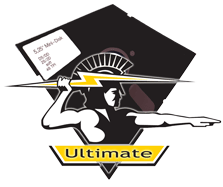 A new version of the firmware for the interface 1541 Ultimate II is released. This version runs only on the 1541 Ultimate II cartridge (new fpga).
A new version of the firmware for the interface 1541 Ultimate II is released. This version runs only on the 1541 Ultimate II cartridge (new fpga).
New features:
The ‘Ultimate Audio’ feature is a new feature for the 1541 Ultimate-II module. It implements multi- channel audio sample playback support from REU memory, and is an exciting addition to the possibilities this cartridge offers.
Download:
source: 1541ultimate.net
 Some new games (Cracked / Trained or Unrealeased) for Commodore 64 have been released from your favorites groups: Hokuto Force, Dinasours, Antarctica, TRIAD, Laxity and Really Proud Lamers.
Some new games (Cracked / Trained or Unrealeased) for Commodore 64 have been released from your favorites groups: Hokuto Force, Dinasours, Antarctica, TRIAD, Laxity and Really Proud Lamers.
Download:
source: csdb.dk
Ikari want to make a bit of clarity of the future of the SD2Snes interface.
Directly from the SD2Snes Homepage:
Progress update & (rough) road map:
In the past weeks, amongst a number of smaller feature requests, I’ve been getting a lot of questions about SuperFX progress. I’ve even seen rumors spread about SuperFX support being cancelled. This is not the case.
SuperFX is the most complex core to implement to date, and it even took me several months to complete Cx4 support. That was before the public release of sd2snes, however, so less people noticed. Rest assured that SuperFX support is still in progress. It will take at least the rest of this year though.
To me, having existing features working properly takes priority. That’s why I’m addressing reported bugs and also minor feature requests which have been in the queue for quite long in parallel to working on SuperFX. I expect there to be 1-2 more releases before SuperFX support is introduced in v0.2.0, not counting critical bug fixes should need for them arise. Since people seem to get annoyed at my love for the Satellaview I’ll put off further work on that until after SuperFX.
There will be a v0.1.5 release shortly, which supports large SRAM properly, fixes sorting of long directory entries, fixes a glitch in SPC playback with S-APU consoles, works properly with non-standard controllers plugged in (e.g. Super Scope), and has more faithful BS-X memory mapping (<- actually finished a couple of weeks ago).
v0.1.6 will probably introduce proper SuperCIC support (allowing to select 50/60Hz from the menu) and maybe rudimentary cheat code support (ROM patching only). Both might be delayed to v0.2.0.
Keep in mind that while I’m continuing work on SuperFX support it helps do something else now and then.
source: sd2snes.de
 Some new games (Cracked / Trained or Unrealeased) for Commodore 64 have been released from your favorites groups: Atlantis, Laxity and Really Proud Lamers.
Some new games (Cracked / Trained or Unrealeased) for Commodore 64 have been released from your favorites groups: Atlantis, Laxity and Really Proud Lamers.
Download:
source: csdb.dk
This is a new promotional spot released a few hours ago for the interface C64SD Infinity v2.0 Blue version by Manosoft
Watch the Promotional Spot:
source: manosoft.it
 Commodore Free Magazine Issue #64
Commodore Free Magazine Issue #64
Free to download Commodore magazine dedicated to Commodore Computers.
| In this issue you can find: | ||
| Editorial Commodore Free E-Cover Tape #1 NEWS BBC: 30 Years of the C64 Flimsoft Reveal Working Preview Fifteen 3D Game Released PDXCUG.org Meeting Tortured Hearts RPG Game More ComVEx Photos New VIC 20 Website Opens Cubase64 |
Comet+ Internet Modem/Disk Drive Greenrunner/Redrunner/Retroskoi+ AmiSystemRestore Individual Computers Hollywood Player 5.1 for Android Leaderboard Collection SID-Wizard 1.0 RC C64 – The Journey Continues Commodore C=64 Special Edition Commodore 64 Monitors Lost In The CLOUDs
|
AmigaOS Beta Testers. First Computer or The Evolution of a Commodore Addict My Early C64 Memories Commodore 64 And Versions Review: Knight n Grail The Making Of Soulless [Mini] Game Reviews Corner In Review: The SD2IEC C64 Absolute Beginners Guide Writing About The Commodore 64 The VC 314 – Raspberry PI in a C64 Commodore 64 |
Download:
source: commodorefree.com
 Forth, the Language.
Forth, the Language.
Forth is a different language. It’s aged and a little weird.
What’s cool about it? It’s a very low-level and minimal language without any automatic memory management. At the same time, it easily scales to become a very high-level and domain-specific language, much like Lisp. Compared to C64 Basic, Forth is more attractive in almost every way.
It is a lot more fast, memory effective and powerful. Compared to C, specifically cc65, the story is a little different. It’s hard to make a fair comparison. Theoretically Forth code can be very memory efficient, and it’s possible to make Forth code that is leaner than C code. But it is also true that cc65 code is generally much faster than Forth code.
Download: durexForth v1.21 (1067)
source: noname.c64.org
Present a pet 2001/3032 intro called: it could be better.
Many years have passed since our last release. It’s time to release a demo for the Commodore PET 2001/3032.
Stay tuned, the next demo might be for the Commodore 64 or for other retro computers.
Creditz for this intro go to:
Video demostration on real hardware:
The archive contains the. PRG and the .TAP and a description in “FILE_ID.DIZ” format.
Download: It could be better by Nightfall (1617)
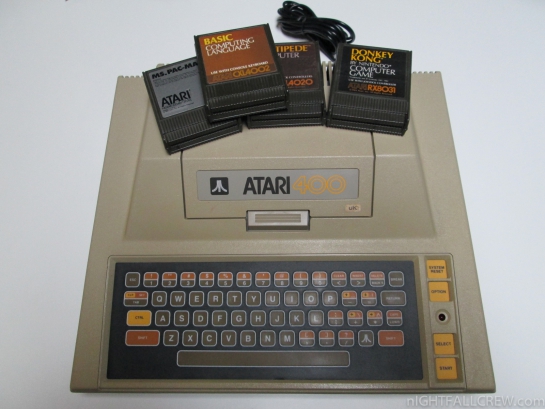
Autopsy:
from MyOldComputers.com:
The year was 1978. Atari was at the top of the video gamming world with its 2600 VCS game console. Atari management looked around and saw a new and potentially lucrative market just beginning to take shape. This market was the Home Computer Market. They saw a market with relatively few major competitors and Atari was in a great position to market a computer of their own. They, after all, were a trusted household name, everyone owned an Atari or knew someone who did!
So December of 1978 Atari introduced the 400 and 800 series computers. The actual computers were not delivered until late 1979 due to production problems. The 400 was a scaled down version of the Atari 800. Introduced as an entry level computer based on the same MOSTEK 6502A processor running at 1.70 MHz with 16K of user RAM built in. It had a membrane style keyboard (not very touch type friendly) with 62 touch sensitive keys and 4 special keys to the right of the keyboard.
It stood out amongst the other computer offerings of the day with its graphics and sound capabilities. It was capable of producing 128 colors on the screen using the CTIA video processor and up to 256 colors with the upgraded GTIA video processor chip used on later versions of the computer. The 400 was first amongst the early computers to be able to display 4 programmable screen objects simultaneously called ‘Player-missiles’ (also known as ‘Sprites’ on Commodore computers). This was at a time when the most computers produced only monochrome displays or very primitive 8 color screens. The graphics were handled by a custom chip called the “ANTIC” (CTIA/GTIA). This chip was designed to work as a sort of co-processor to take the work load away from the main processor to display graphics and color on the screen.
The team that developed the custom chips inside the 400 and 800 was headed by Jay Miner who later, after leaving Atari, headed the teams who developed the custom chips that surrounded the Motorola MC68000 processor that powered arguably the most advanced computer of its time, The Amiga 1000!
source: myoldcomputers.com
This is a little description of the repair of a Radio Shack TRS-80 Model 1 for a Friend.
The computer comes with several problems.
Finding the cause of the fault has not been easy, i had to ask for a help to Ian, this dude is an expert of TRS-80 repairs.
How you can see from the photos, i had to replace a number of IC.
Stage of the defect (before and after):
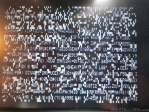
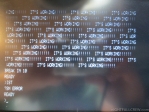
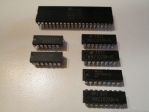
Keyboard repair (replacement of internal contacts):

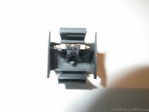
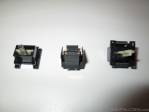
Micro Computer Technical Reference Handbook:
Download: TRS-80 Micro Computer Technical Reference Handbook (2532)
Recent Comments